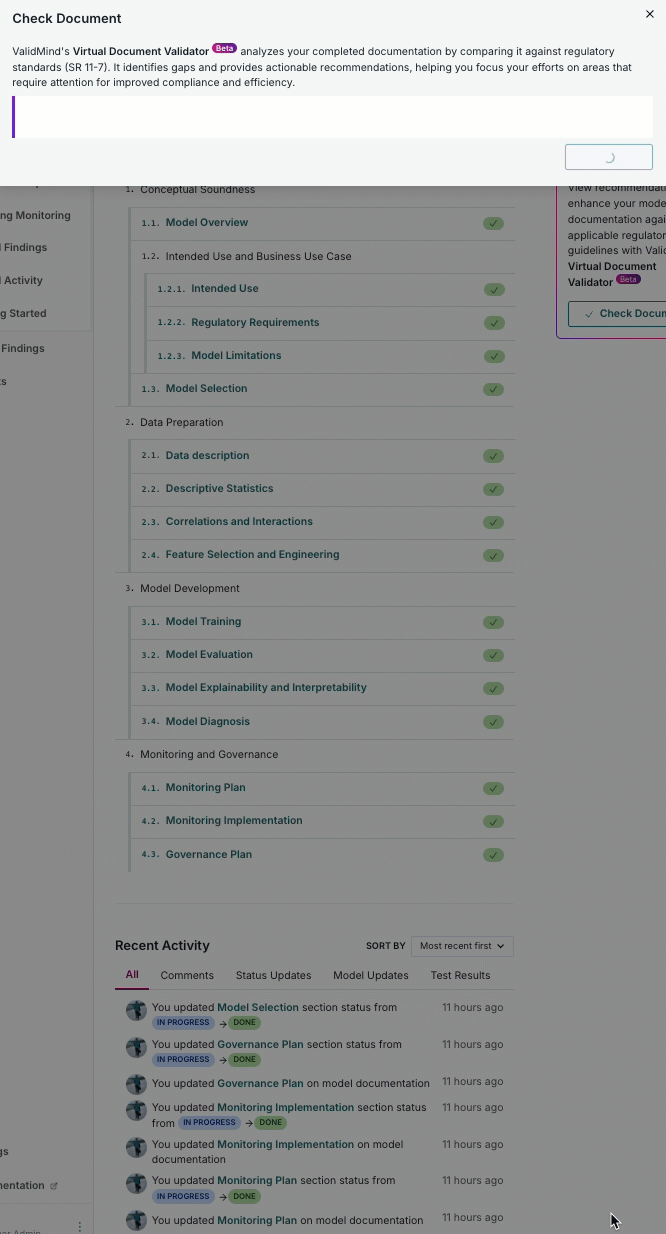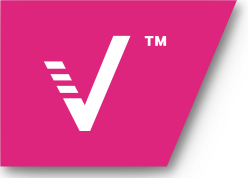The EU AI Act
Compliance with ValidMind An interactive platform demo — MVP FOR INTERNAL FEEDBACK ONLY
Navigating the EU AI Act
The act is extensive, requiring organizations using AI systems — especially high-risk ones — to comply with strict guidelines on transparency, risk management, data governance, and human oversight.
The act also outlines the roles and obligations of all parties involved in AI regulation. The majority of those obligations fall on the providers of high-risk AI systems — you.
The experts at ValidMind have created a free brief with actionable strategies to help you navigate the complexities of the EU AI Act and understand your obligations.
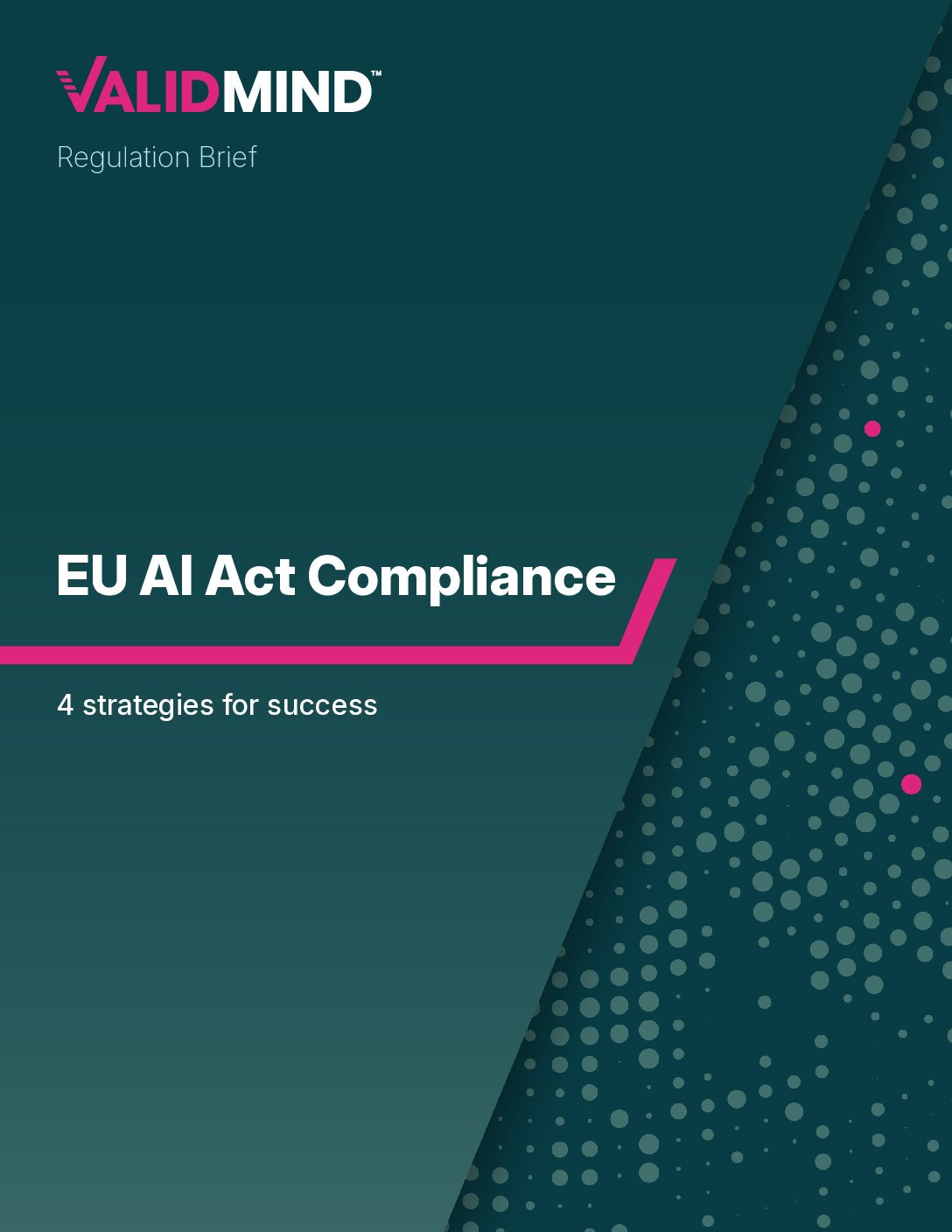
TO DO — MEHDI/SEAN
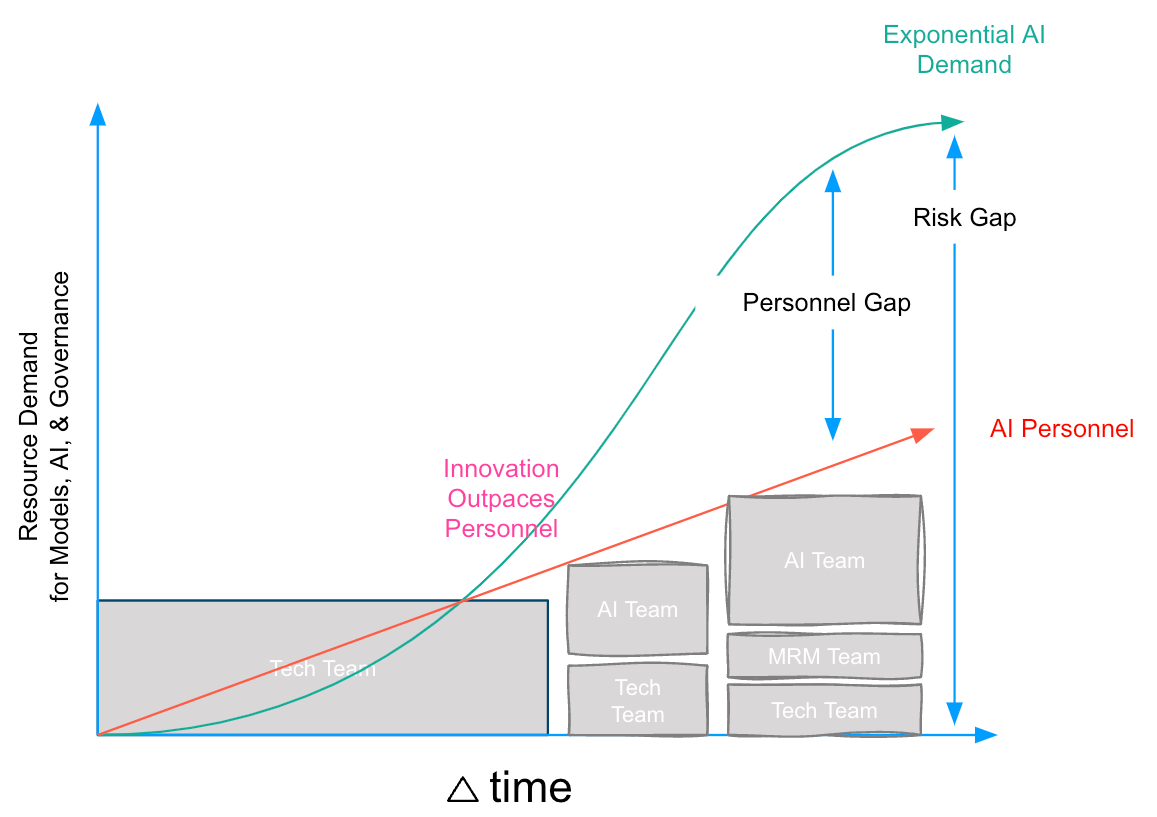
The AI Risk Gap
Models are widely used, but regulatory compliance and business risk management often lag, creating a strong need for automation in model risk management and validation.
Can you log in?
Be sure to return to this demo afterwards
OR
Email us to get to get your login
The Model Inventory
The model inventory is your central hub for all registered models.
- Manage models in line with your policies
- Customize fields
- Search, filter, and sort
Easily register new models with a name, type, and template.
Define business units, use cases, and customize inventory fields to fit your needs.
ValidMind templates power your model documentation, validation reports, and ongoing monitoring.
Register a model
Go ahead, try it!
Model registration aligns with the EU AI Act.
Calculate risk classification to guide the model workflow by capturing:
- Purpose
- Industry
- Sensitive data use
- Human oversight
TIP: Use a template tailored for the EU AI Act — there are several to choose from.
Automate Model Documentation
Next, let’s view some model documentation.
Templates offer developers a structured outline with:
- Sections
- Guidelines
- Preconfigured tests
Customize any template by adding tests, new sections, and much more.
Jump in, explore!
Readily available tests
ValidMind’s repository provides 250+ out-of-the-box tests, and you can easily add your own custom tests.
Get started quickly with our comprehensive developer documentation.
Explore our test sandbox!
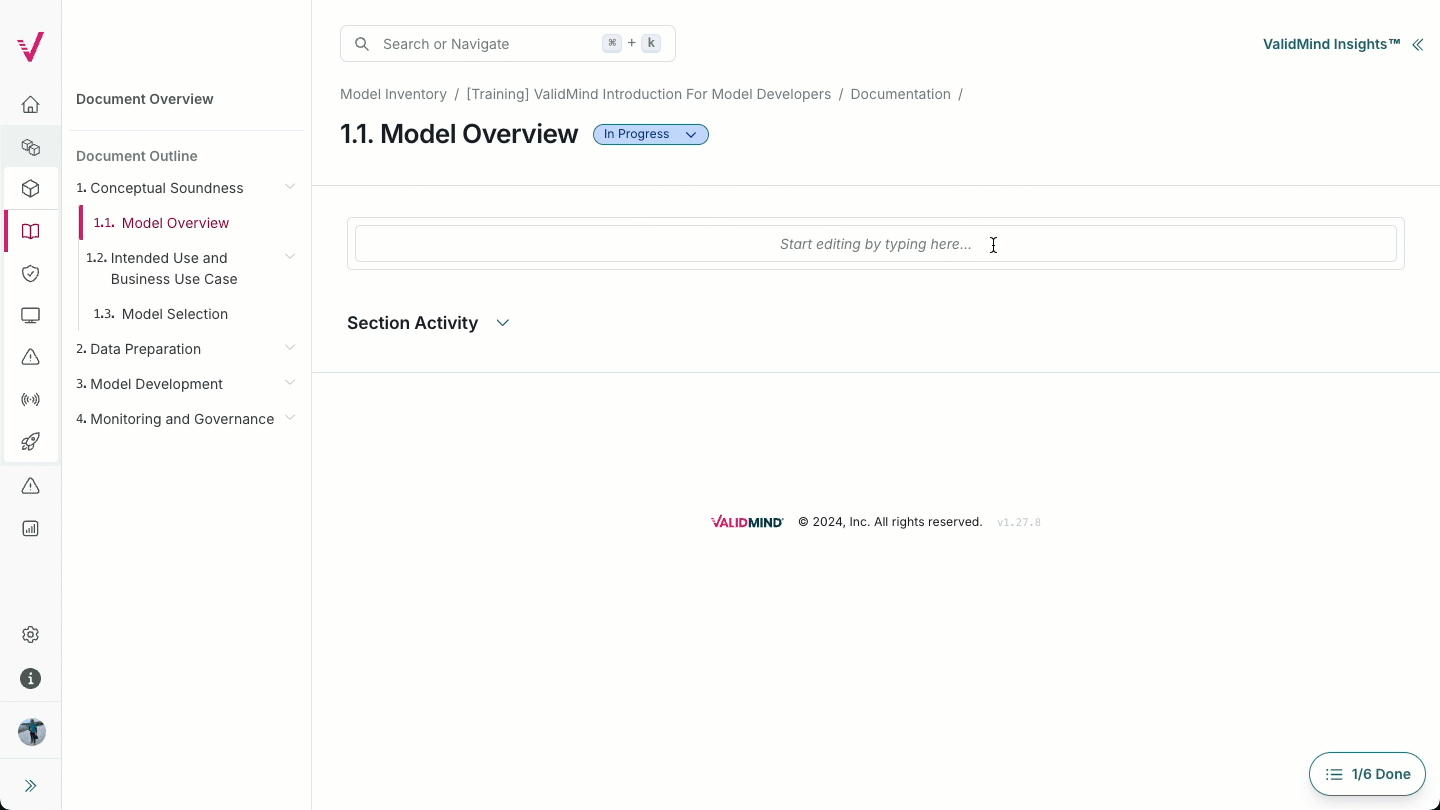
Rich AI features
Documentation is generated for model developers with summaries during model development, saving you time.
When ready, transition your model to be validated — the same, rich features are also available to model validators.
Validation reports
Validation reports also use structured templates to assess how well requirements are met:
- Work with findings
- Link evidence
- Collaborate with model developers
All on one platform.
Jump in, explore!
Assess compliance for each section by linking evidence from developers and validators to evaluate the model.
Tailor the process to regulatory or internal standards, and let ValidMind generate risk assessment notes with clear recommendations.
You can even create challenger models as evidence during validation.
Feel free to explore!
First and second line interaction
Validators can create official findings to challenge developers’ work all in one platform.
Each finding includes a severity, risk area, due date, and documentation reference — fostering close collaboration between developers and validators.
This process ensures thorough checks and balances and clear remediation plans — even if you have thousands of models.
Collaborate with other developers or with your validators right in the model documentation.
Have a question about the model? While working with content blocks in documentation, you can comment directly on specific sections.
Give it a go, add a comment!
Comment history is tracked — it becomes part of the model activity feed.
Ongoing monitoring
Ongoing monitoring allows your models to be tracked in production with regular reporting.
Proactively identify and address potential issues before they affect outcomes.
Jump in, explore!
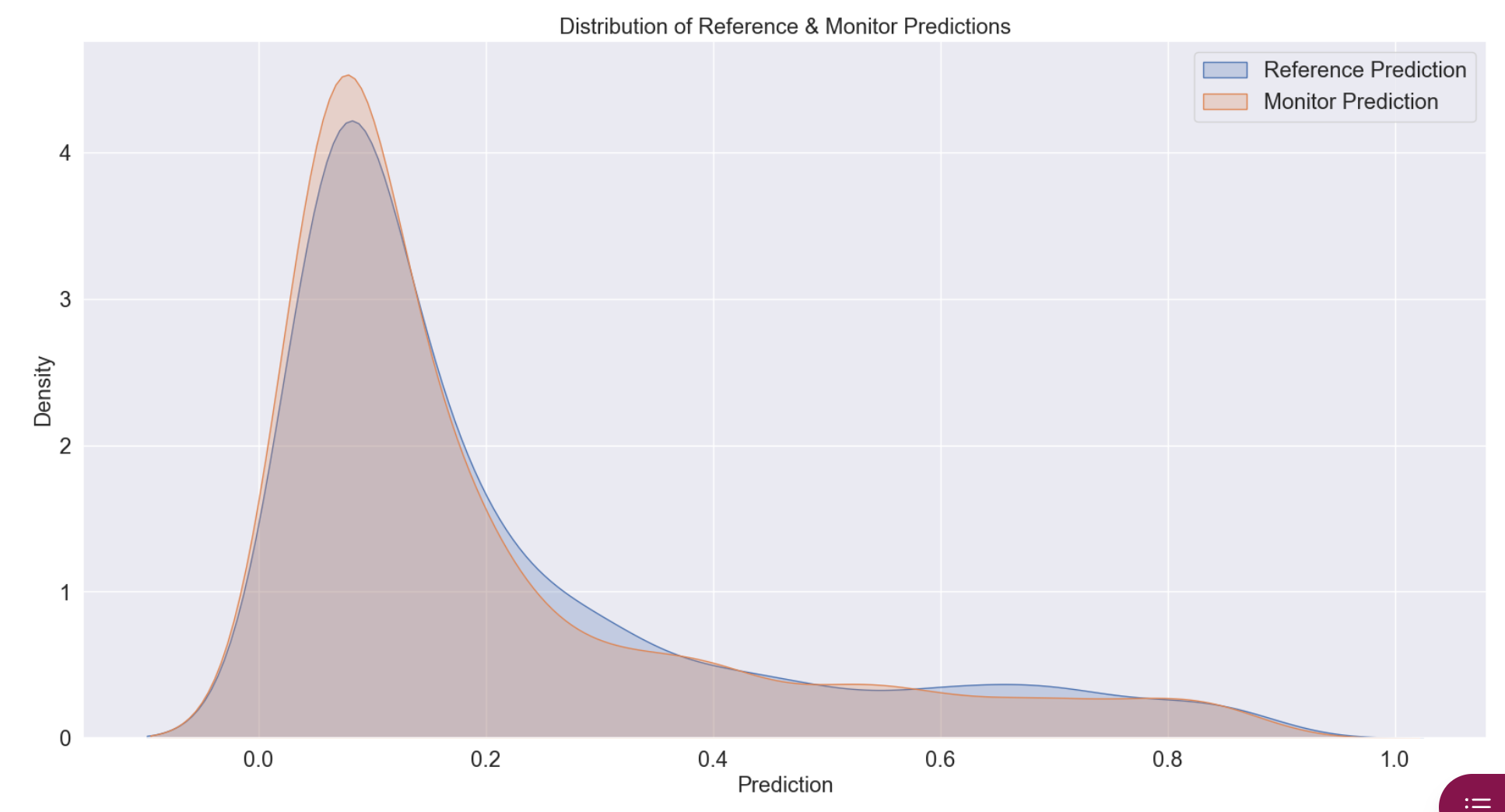
Governance
ValidMind provides analytics for cross-functional stakeholders.
Reports display figures, charts, and data tailored to a non-technical audience, offering quick insights into model performance.
Go ahead, explore our analytics.
Advanced LLM features
At ValidMind, our approach to AI features, particularly in testing and risk management, reflects a philosophy of drinking our own champagne or using our own products.
This means that, while we create risk management tools for our users, we also rigorously apply these tools and practices within our own product development.
Our testing methodologies and philosophy around testing are readily available.
Request a demo
